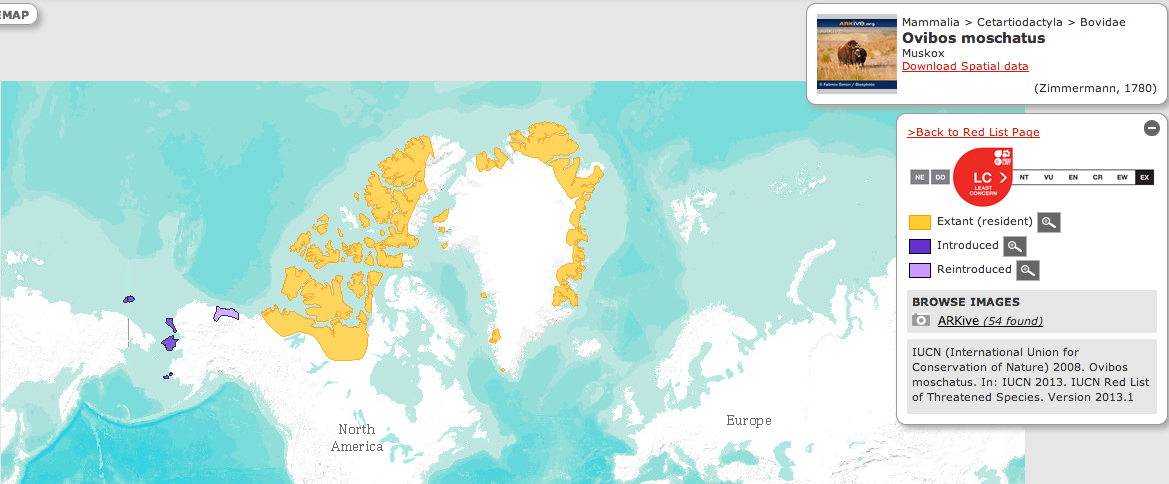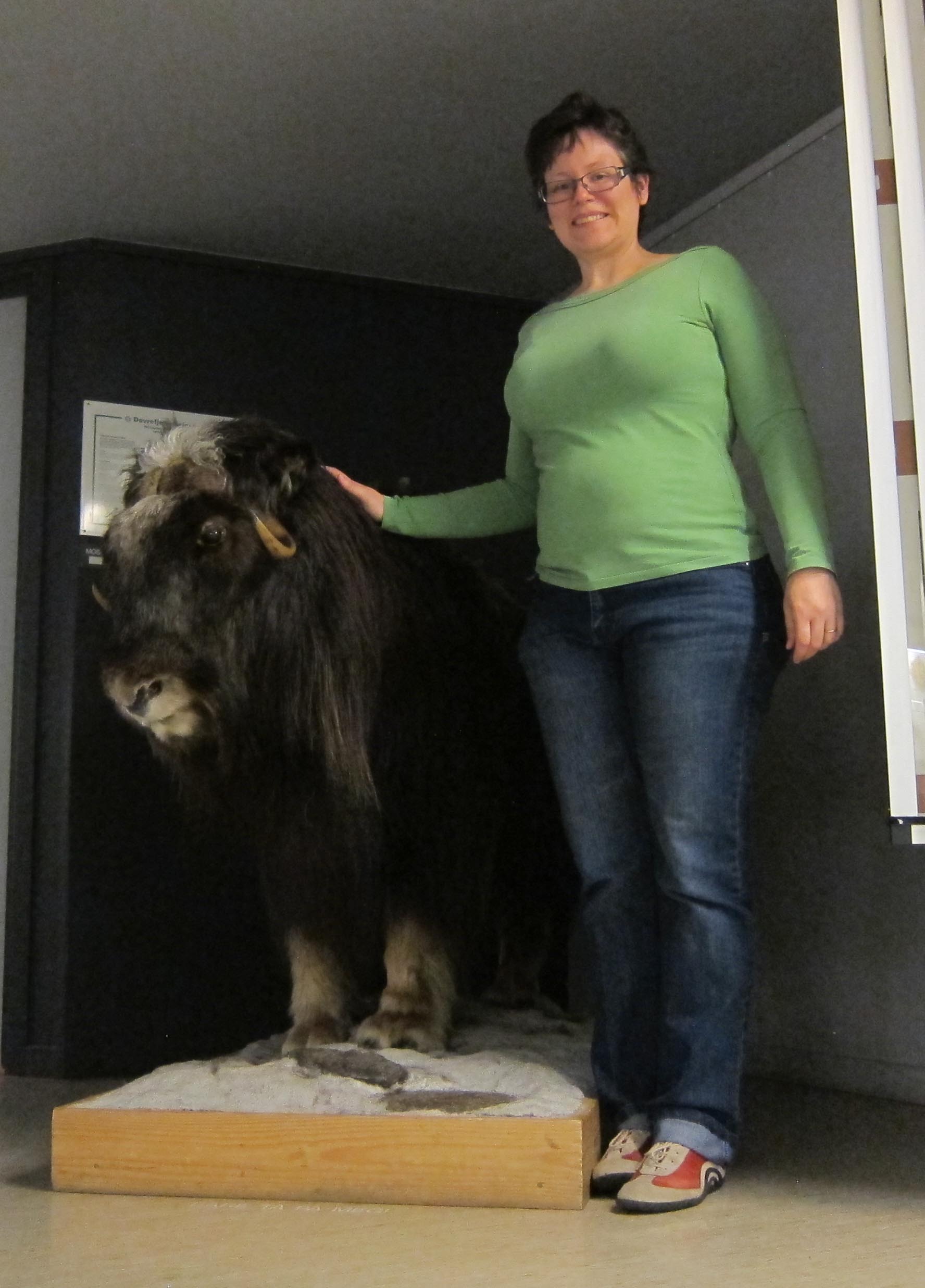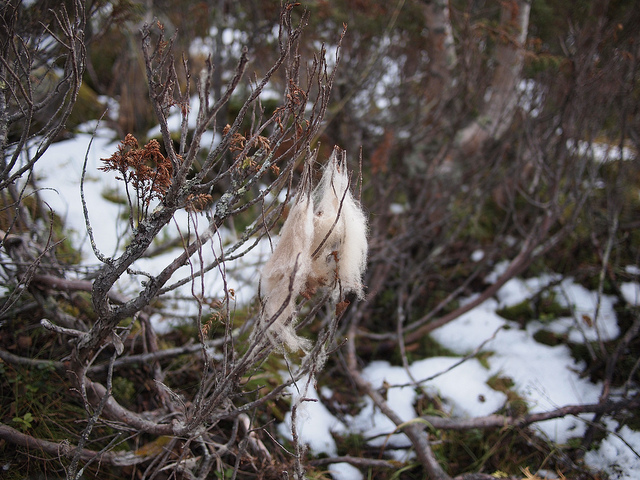
Quest for qiviut
As I was reading about the small Swedish muskox population, I found out that all of the muskox at the Myskoxcentrum in Härjedalen came from Ryøya, near Tromsø, Norway. What?!? Muskox on Ryøya? I knew about the Dovrefjell group and an attempt to introduce muskox on Svalbard (more on that later), but I had never heard of a group in northern Norway. The search was on.
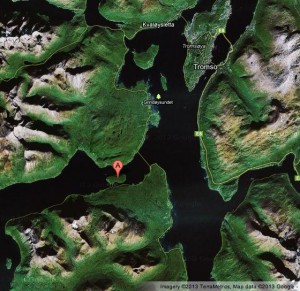
It turns out that there is a flock of about 20 animals running around free on a small island named Ryøya off the coast of Tromsø. NRK’s Ut i naturen television program made a 24-minute show about “Moskusøya” (“Muskox Island”) in 2006. Unfortunately the show is in Norwegian, but even if you don’t speak Norwegian, it’s still worth watching for a while if you want to see muskox running around and scientists trying to catch them. In the Ut i naturen program, we also get to see some historic television clips from the 1960s when the muskox first came to Troms.
In 1969, 25 muskox calves arrived in northern Norway via boat from Greenland. The idea was to raise muskox for their wool as domesticated livestock. The University of Fairbanks in Alaska had some kind of research project related to muskox husbandry (I haven’t looked into that yet) and the idea was transferred to Norway.
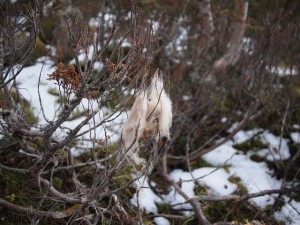
The undercoat wool of muskox, known as qiviut, is a highly valuable wool: it is warmer than wool, finer than cashmere, hypoallergenic, and does not shrink, according to one of the websites selling quivit. Sounds like the perfect winter clothing material, except that muskox are pretty rare and not widely domesticated – which makes it a very, very expensive material. As far as I can tell, regular merino wool sells for about $9 for a hank of 220 yards (depends of course on quality, color, etc.), whereas qiviut sells for $98! In 1969, the herd was established at a farm in Bardu with the hope that eventually every farm in the area could have 2-3 muskox for a meaningful supplementary income.
But by 1975, calls for the end of muskox experiment were being made. According to media reports, a hunter was killed by a muskox and the muskox population was being devastated by a virus (hmmm, sounds familiar, right?). So in 1976, the herd was moved to northern Troms, and five years later, it was given to Tromsø University for research. The Department of Arctic and Marine Biology took over the herd and moved them to Ryøya to study their behaviour and adaptation as arctic animals. Muskox as livestock in Norway didn’t work out.
The scientists, however, are still taking advantage of qiviut. If you watch the TV program, you’ll see that while the scientists have the muskox under sedation to collect measurements and/or for transportation to the overwintering station on the mainland, they quickly pull out the qiviut, which presumably they sell to support their research. Along with muskox sausage (see my previous post), qiviut is a bonus of having muskox in Norway — if you can catch them.



